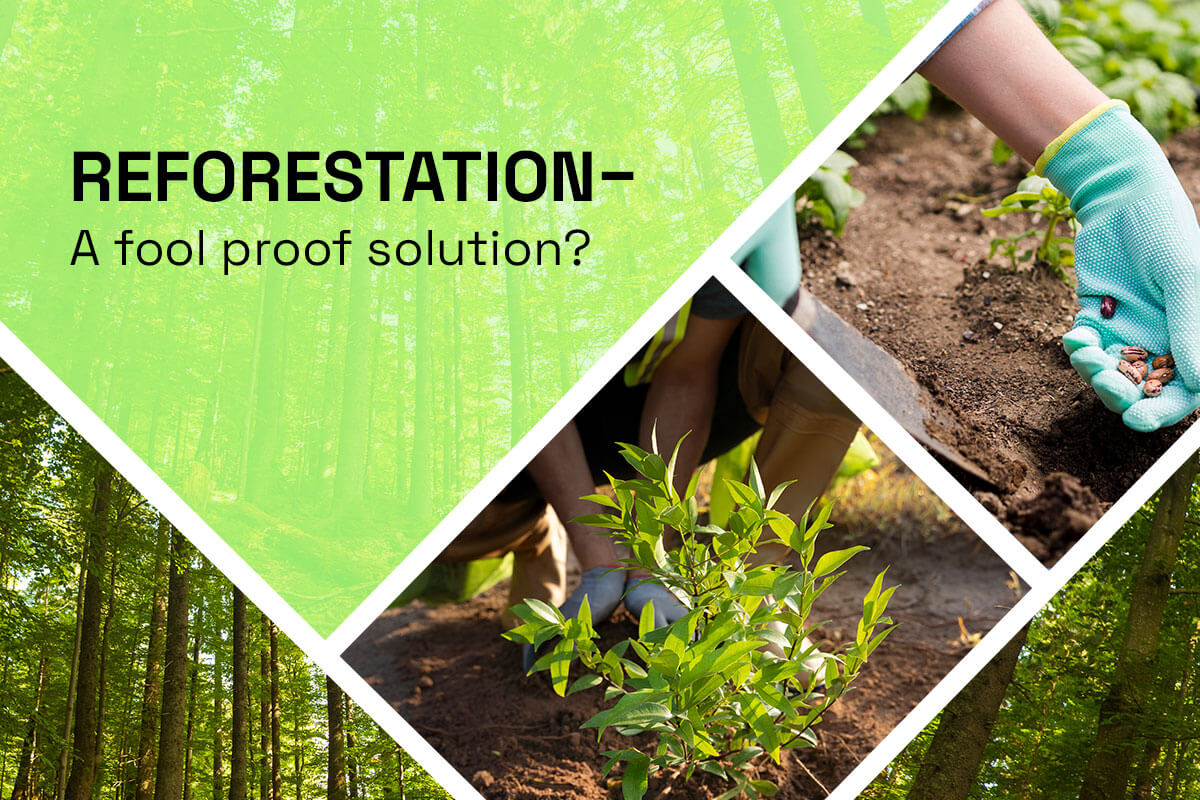Reforestation – a fool proof solution?

Reforestation is the replanting or regeneration of trees to compensate for the forests that have been affected due to natural calamities like floods, wildfire, earthquakes, etc., or by intentional woodcutting or forest clearing practices of humankind. Afforestation is known as the process when trees are planted in new locations or empty fields to increase green cover. However, reforestation and afforestation are often used as interchangeable words despite being technically different terms. Even though this might seem like an inappropriate usage of both terms, they have grown to be synonymous due to human activities. Due to urbanization there has been an increased cut down of forests and then eventual attempts at plantation of trees elsewhere to compensate for the damage done to the society. Therefore, every afforestation attempt is actually reforestation in disguise. The lines are getting blurred, and therefore the terms’ usage is similar.
The need for reforestation comes from the presence and practice of deforestation. Deforestation basically sums up the human activities of clearing up forests or cutting down trees for agriculture-based, residential, industrial, or other commercial activities. Reforestation has become essential to saving our planet. With the increased levels of pollution, the danger of a forthcoming climate crisis, and the increased frequency of natural disasters, it has become absolutely important to form our first line of defense, which comes in the form of reforestation. Reforestation has been acknowledged as the cheapest, most easily executable, and most impactful solution to all these problems at the same time, therefore temporarily resolving the world’s gravest concerns while they work on other solutions and technologies to supplement reforestation in the fight against these massive problems.
Reforestation can have a direct impact on the halting of environmental degradation, the reduction of harmful pollutants in the air, reducing temperature levels to slow the rate of global warming and the eventual climate crisis, redistributing underground water, which would avoid droughts, or binding soil together, which would negate soil erosion, infertile lands, or flooding.
Having understood the relevance of reforestation, it is important to understand how the process of reforestation gets implemented at the ground level. Governmental bodies across the globe have released laws that further protect the boundaries of forests to avoid deforestation. The cutting of trees in protected lands is a criminal offense punishable by law. There are systematic efforts to carry out the process of reforestation, while there are drives to propagate awareness and knowledge regarding the importance of forests. However, the real question is: are these efforts enough and are they visible enough to bring about an actual change?
There are two types of reforestation, namely urban reforestation and rural reforestation. Urban reforestation is helpful to reduce temperatures and improve the air quality of the city. This process of reforestation has to be planned while keeping in mind the grid of the city. In the case of rural reforestation, areas that have been hampered due to calamities, whether man-made or natural, go under reforestation.
The process of reforestation involves certain simplistic steps like a site study, picking a species of plant, a planting method, and a protection plan. However, steps that appear simple are more challenging to execute. The disadvantages or hindrances to look at during reforestation are as follows: lack of management can lead to unimpactful reforestation; large tree cover can have a reverse impact, for example, worsening the soil condition due to the increased salinity; errors in judgment in terms of plant species and planting methods can have negative consequences; and ultimately, a systematic approach for not just reforestation but also protection is hard to attain.
Some methods of reforestation have been suggested. Using the existing trees and roots would make the process cheaper and also incorporate the existing, spread-out roots, making it easier to grow trees. This is deemed a considerable option. Another method can be providing financial incentives to people to indulge in reforestation activities. It has been observed that when financial incentives have been given out, they have worked as a motivating factor for people to practice reforestation. While it may be sad that we need to entice people with finances to save their own planet, a method that shows results can be considered a good method to go ahead with it.
Therefore, while reforestation can have a major influence on the grave concerns of today’s world, it is not devoid of its own demerits and hindrances.
